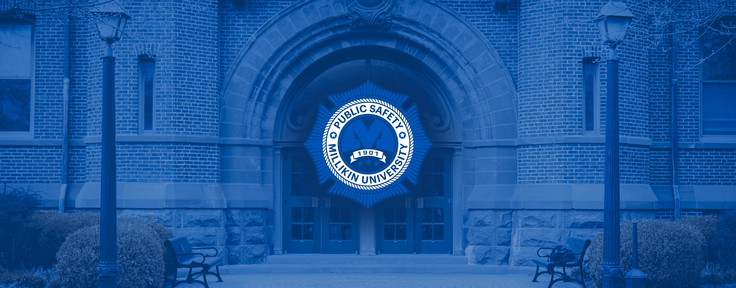Things to Know About Weather
Weather Advisories and All-Clear Signals
- The National Weather Service broadcasts continuous weather status and forecast information on a special frequency of 162.400 Mhz from its Springfield office; this information is updated hourly. In addition, the NWS will broadcast special alert tones and messages for tornado warnings, flash flood warnings and similar impending weather emergencies. Weather alert radio's are available in stores and are able to monitor this frequency and receive the special alert warnings. People or offices requiring current official weather information or desiring to take advantage of the alert warning service should check with a radio equipment dealer or store for further information. If you would like more information on the NWS Alert Radio System, please visit the National Weather Service website http://www.nws.noaa.gov/nwr/.
- It is recommended that people should maintain a battery-operated AM and/or FM radio, and take the radio with them should it become necessary to seek shelter from a tornado or other severe storm. Radio and television stations in the area are; WSOY 1340 (radio) and WAND 17 (television). The stations provide information on why the sirens are sounding and for instructions on what actions to take.
- People in shelter spaces should not rely on visual observations of local conditions as a reliable indicator of the true status of the weather, since hail and tornadoes have been known to occur under apparently clear-sky conditions.
- An all-clear signal will usually be given on the local radio stations for any imminent danger warning and will be disseminated by means of the Millikin Security Department Staff, your Hall Director or RA. The radio stations may also be used for weather advisories and updates.
Shelter Space
Safe shelter from a tornado may be sought in virtually any building of substantial masonry construction; almost all University facilities meet basic shelter criteria.
The lowest level of the building should be used, avoiding spaces with glass surfaces on any outside wall; doors can usually be arranged to augment protection. Buildings of frame construction and those with broad, flat roofs or large open interior spaces (such as auditoriums, cafeterias, or gymnasiums) should not be used as shelter. Many such areas, however, have adjacent service spaces (such as corridors, walk-in coolers, or showers) which are reasonably safe.
University Residential Units
Once the sirens sound, it is too late to proceed to the designated shelter area! Residents should stay alert to developing severe weather and have identified shelter space beforehand. If possible, upper floor residents should arrange with downstairs neighbors for shelter on the ground floor.
Bathrooms without windows, closets, or interior hallways offer the best protection inside each apartment. Doors should be arranged to protect against airborne debris, particularly glass and wood splinters.
Weather Terminology
The National Weather Service (NWS), public news media, and public safety agencies utilize standardized terminology when referring to severe weather conditions; those terms most frequently used are listed and defined below.
Thunderstorms
Severe Thunderstorm: Wind gusts of 50 knots (58 mph) or greater and/or hail three-quarters of an inch in diameter or larger. Sustained or gusty surface winds of 60 mph or greater.
- Do not go outside during a thunderstorm.
- If outside stay away from trees and water.
- Do not take showers during a thunderstorm.
- Avoid using telephones and appliances.
- If you are driving, use caution and watch for downed power lines and trees. Be alert to flash flooding.
- Do not use a computer during a storm; be sure it is unplugged.
- Make sure your air conditioning unit is turned off.
Severe Thunderstorm Watch: Severe thunderstorms are possible. Listen to the radio or local news channel for updated information and be prepared to take shelter.
Severe Thunderstorm Warning: A severe thunderstorm is occurring and you need to stay indoors. Turn to a radio station or a local news channel for updates.
Tornado: A violent local storm of short duration with very high-speed winds rotating about a vortex with a funnel extending from the base of the clouds to the ground.
- Take shelter immediately either in the basement, storm cellar, or the lowest level of your residence.
- Stay away from windows, outside walls, and doors.
- If you are outdoors seek shelter in a ditch or a nearby building.
- Never try to outrun a Tornado in your vehicle.
Tornado Watch: Conditions are favorable for a tornado. Keep a battery operated radio near by for updates and tune into the local news station.
Tornado Warning: A tornado has been spotted or indicated by the local weather radar. Take shelter immediately and wait for the all clear to be given by your local news station or local radio station.
Floods:
- Do not try and drive through a flooded area.
- Get to high ground immediately.
- Do not try and swim in flooded areas due to the current is moving extremely fast.
- Have a basic first aid kit, battery powered flashlights, and radio on hand.
- Clothing and bedding--have sturdy shoes or boots, sleeping bags, hat, gloves and rain gear (depending on the weather, will depend on what you will need).
Flood Watch: Flooding is possible die to heavy rains. Keep a radio close for updates.
Flood Warning: Flooding is occurring or can occur soon. If you are advised to evacuate do so as soon as possible.
Flash Flood Watch: Flash Flooding is possible and you need to move to higher ground. A flash flood could occur at anytime without warning.
Flash Flood Warning: A flash flood is occurring and you need to seek higher ground immediately.
Supplies:
- Keep a fresh supply of batteries.
- Have a radio and flash light ready to go.
- In case of a power outage have water and non-perishable foods stored in your designated shelter.
- Keep a first aid kit stocked.
- Have a weather alert radio in your house.
- Have a change of clothes available.
- Don't forget any prescription medications.
